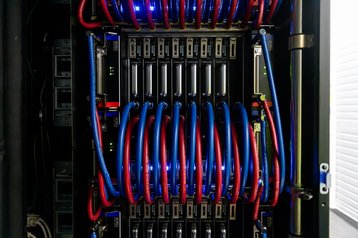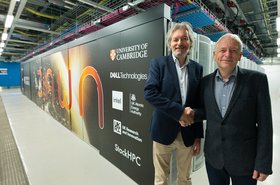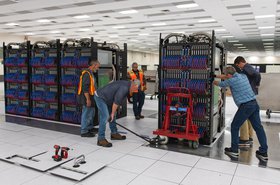A business case has yet to be drawn up for a new UK national AI supercomputer, announced by the government this week, suggesting the project is at a very early stage.
The supercomputer was announced as part of a new action plan designed to boost the nation’s compute power and AI capabilities. Ministers said it will double the size of the national AI Research Resource (AIRR) – compute power which is available to scientists and other researchers to help with their work.
However, the Department of Science, Innovation and Technology (DSIT) declined to answer questions from DCD about how much the computer will cost and what sort of hardware it will feature, as well as when it will be up and running.
DCD understands that DSIT intends to start developing the business case for the machine immediately, and aims to lock in a site and suppliers for the project by the end of 2025.
News of the new supercomputer represents something of a u-turn from the Labour government which took office last July. It comes just months after it scrapped plans put forward by its Conservative predecessors to spend £1.3 billion ($1.66bn) boosting AI infrastructure.
This would’ve seen £800m ($1.02bn) for an exascale supercomputer system at the University of Edinburgh and £500m ($637.2m) in additional funding for the AIRR. But Labour said no funding had been committed to either project, so they had to be cancelled.
Following this week's announcement, Professor Peter Mathieson, the vice-chancellor and principal of the University of Edinburgh, said his institution “has been at the heart of the research and development of AI for the past 60 years,” and added: “We note the focus on the need for greater supercomputing capacity within the public and private sectors, and the plans to increase this twenty-fold by 2030.
“As the host of national supercomputing services for the past 30 years, we stand ready to play our part to deliver this vital resource for the country.”
The AIRR was set up under the Conservatives, and saw two new supercomputers developed. Isambard-AI, based at the University of Bristol, will eventually contain 5,448 Nvidia GH200 superchips and offer 200 petaflops Linpack and 21 exaflops of AI compute.
It is designed to link up with Dawn, another supercomputer based at the University of Cambridge. This machine could eventually be the fastest supercomputer in the UK, but is currently in the first phase of its development, and offers 19 petaflops of FP64 performance.
Read the orginal article: https://www.datacenterdynamics.com/en/news/business-case-not-established-for-new-supercomputer-that-forms-part-of-uk-government-ai-plan/










